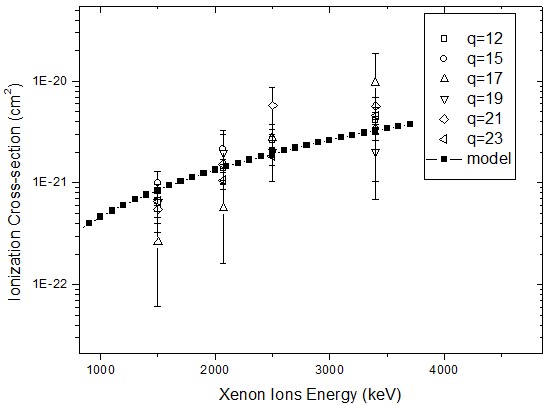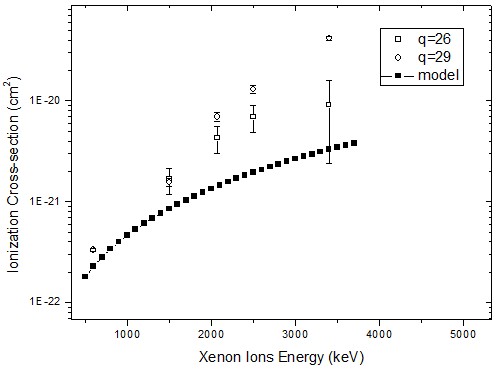Researchers in Institute of Modern Physics, Chinese Academy of Sciences (IMP) measured K-shell X-ray spectra of Al by using the interaction of 600–3400 keV Xeq+(q = 12–29) ions with Al surface .
The experiment was performed at the 320 kV platform for multi-discipline research with highly charged ions at IMP.The X-ray yields per incident ion were deduced and the K-shell ionization cross-sections were obtained from the experimental yield data.
The obtain result showed that the K-shell ionization cross-sections of Al excited by Xeq+(q < 26) ions were of the same order of magnitude with the same incident energy, while for q = 26 and 29 Xe ion collisions, they were, respectively, about two and ten times larger.
Taking into account the binding-energy-modification and the recoil effect of target atoms, the binary encounter approximation (BEA) theory was consistent with the experimental data for q < 26 Xe ion collisions, but it underestimated those excited by q = 26 and 29 Xe ions. This indicates that the K-shell ionization of target induced by Xeq+(q < 26) ions was mainly due to the direct Coulomb excitation. However for q = 26 and 29 Xe ions collisions, the transfer of 3d vacancies of projectile to the 1s orbital of target via rotational coupling of the 3dπ, δ-3dσ molecular orbitals, which were formed in the ion-atom quasi-molecule, may cause a considerable contribution to the enhancement of ionization.
In addition to the well known Auger and X-ray transition, these experiments proved that the molecular orbital transition (“side-feeding”) mechanism is also a significant channel for de-excitation of hollow atoms formed below the surface.
This work has been published on Eur. Phys. J. D 64, 197–201 (2011)
WebLink:http://www.springerlink.com/content/fv3t3060172p403n/fulltext.pdf

Fig.1 K-shell ionization cross-section of aluminum induced by xenonq+ ions(q=12-23) with energy of 1500-3600 keV. The model results according to the BEA theory with UA approximation and correction of recoil atom are also shown. □: q=12; ○: q=15; △: q=17; ▽: q=19;◇: q=21; ◁: q=23; ■: the model results. (Image by IMP)

Fig.2 K-shell ionization cross-section of aluminum induced by xenon ions(q=26,29) with energy of 600-3600 keV. The model results according to the BEA theory with UA approximation and correction of recoiling atom are also shown. □: q=26; ○: q=29; ■: the model results. (Image by IMP)

